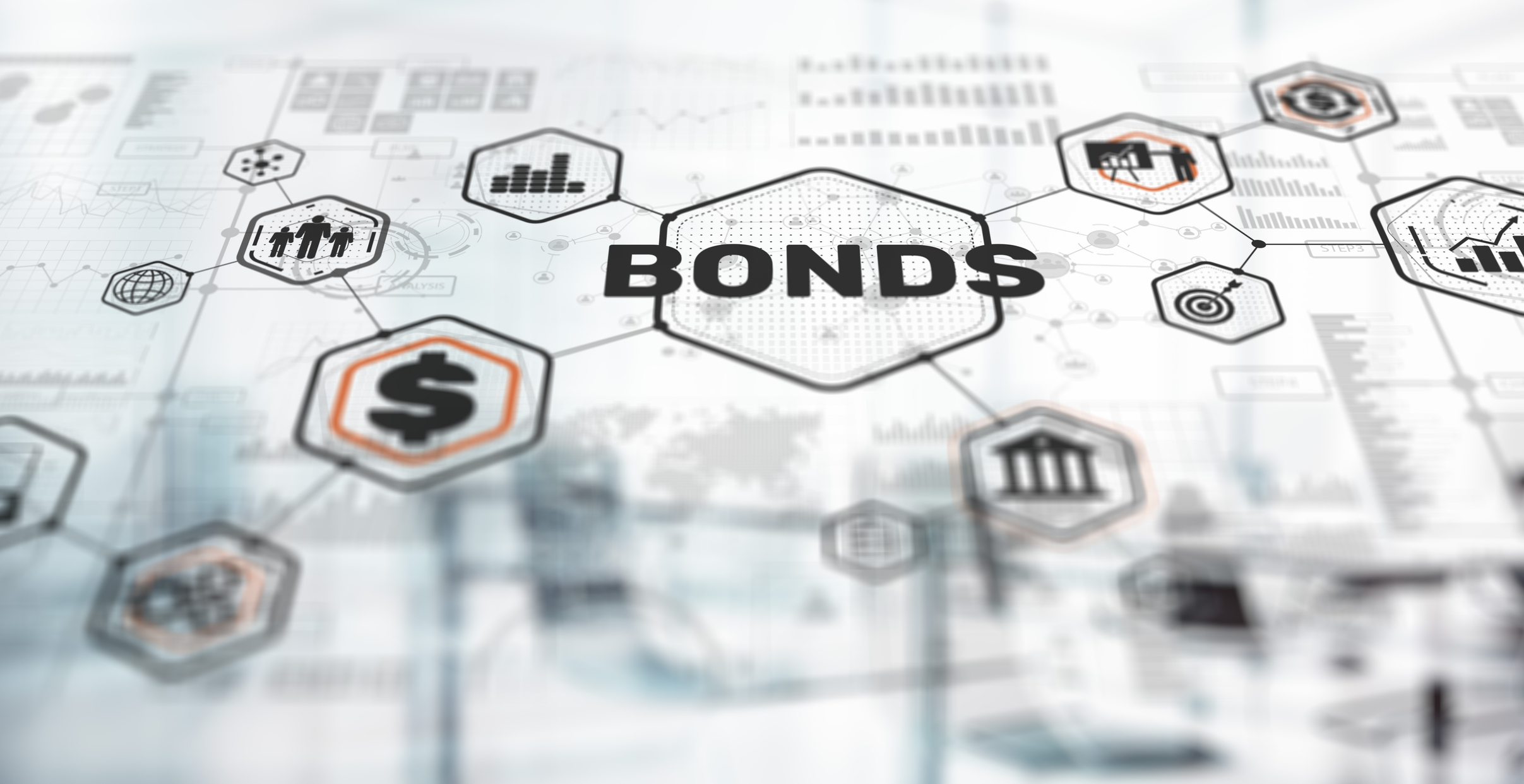What Are Bonds and How Do They Work?
Bonds: Understand the concepts of yield, maturity, interest and price.


Bonds sound boring, but they're not. Nor are they a nice safe haven for rich and retired folks who never want to lose money.
They have a role to play in your investment plan.
Bonds can help you manage risk, diversify your investment portfolio and save for short and long-term goals.
From just $107.88 $24.99 for Kiplinger Personal Finance
Be a smarter, better informed investor.

Sign up for Kiplinger’s Free Newsletters
Profit and prosper with the best of expert advice on investing, taxes, retirement, personal finance and more - straight to your e-mail.
Profit and prosper with the best of expert advice - straight to your e-mail.
Here, learn more about these helpful tools.
What are the types of bonds?
In their basic form, bonds and other credit instruments, such as notes, bills and commercial paper, are IOUs — basically, receipts for money borrowed from the investor.
Bonds obligate the issuing organization to pay a fixed amount of interest periodically (usually semiannually) and repay the full face amount on the maturity date, which is set when the bond is issued.
Governments and corporations regularly finance their operations by issuing such credit instruments.
Municipal bonds, also known as munis or tax-exempts, are issued by state and local governments and are secured by the full taxing power of the issuing organization.
Revenue bonds depend on revenue from a specific source, such as bridge or road tolls. Some municipals are secured by revenue from a specific tax.
Secured corporate bonds are backed by a lien on part of a corporation's facilities, equipment, or other assets.
Unsecured bonds, known as debentures, are backed only by the general credit of the corporation. Zero-coupon bonds are issued at a big discount from face value and pay no interest until maturity.
Some bonds are convertible into the corporation's common stock at a fixed ratio – a certain number of shares of common stock in exchange for a certain amount of bonds.
How much do bonds cost?
The standard face value for bonds is $1,000 or $5,000. Some are issued in larger denominations, but very few come in smaller denominations.
You buy them through a broker, or, in the case of U.S. Treasury bonds, you can buy them directly through the government.
Do bonds pay out every month?
Most bonds pay interest semiannually. Many mutual funds and unit trusts that invest in bonds pay dividends monthly.
Discount securities, such as Treasury bills and savings bonds, pay interest by deducting it from the sales price, or face value at the time of issue, then paying full face value at maturity.
What is a bond maturity?
When bonds reach their maturity, they pay back the face amount.
Bonds that mature in two years or less are usually dubbed short-term bonds; maturities of up to 10 years are called intermediate; and bonds maturing in ten or more years get the long-term label.
Many bonds are issued with 20- to 30-year maturities. Notes usually run about seven years.
Whatever their maturity, bonds these days usually can be "called," meaning redeemed, by the issuer at a specified date before the scheduled maturity.
An issuer may call in its bonds if, for instance, interest rates fall to a point where it can issue new bonds at a lower rate. It has been customary to pay owners of called bonds a small premium over the face value.
Making sense of bond yields
The coupon rate is the fixed annual interest payment expressed as a percentage of the face value of the bond.
A 9% coupon bond, for instance, pays $90 interest a year on each $1,000 of face value. The payment is set when the bond is issued and does not change as the bond's price fluctuates.
Current yield is the annual interest payment expressed as a percentage of the bond's current market price.
Thus, a 10% coupon bond selling for $1,100 has a current yield of 9.1% ($100 interest divided by the $1,100 price times 100). The same bond selling for $900 has a current yield of 11.1%.
Yield to maturity takes into account the current yield and the eventual gain or loss it is assumed the owner will receive by holding a bond to maturity.
If you pay $900 for a 10% coupon bond with a face value of $1,000 maturing five years from the date of purchase, you will earn $100 interest a year plus $100 five years later when the bond is redeemed for $1,000 by its issuer.
If you buy that bond for $1,100, representing a $100 premium, you will lose $100 at maturity.
The loss, however, could be more than offset by the extra interest earned on a premium-priced bond if its coupon rate exceeds the current yield available on comparable securities.
Tax considerations could also make the capital loss worth taking.
For bonds selling at a discount, the yield to maturity probably provides the best estimate of total return.
Yield to call is computed the same way as yield to maturity, except that it is assumed the bond will be redeemed at the first call date for the face value plus the call premium.
How to understand bond prices
Bond prices are identified by the abbreviated name of the issuer, the coupon rate and the maturity date.
Common price lists give only the current yield, but your broker can get the yields to maturity and call for you.
Prices are reported as a percentage of face value. To get the actual price, multiply the decimal equivalent of the percentage by 1,000.
Thus, a Citigroup 4.40% bond maturing in 2025 might be reported as C 4.4s25 101, meaning the issue is selling at the time of the listing for $1,012 (101%) per $1,000 face value, a small premium that produces a current yield of 4.23%.
How rate changes affect prices
Because the amount of interest paid on a bond or note commonly remains fixed for the life of the issue, the bond adjusts to interest-rate movements by changes in price.
As interest rates rise, bond prices fall; as interest rates fall, bond prices rise.
Generally, the shorter its maturity, the less a bond's market value is affected by changes in interest rates.
Consider a $1,000 bond with a coupon interest rate of 8% – $80 a year.
If interest rates rise to 9% after the bond is issued, you can sell your 8% bond only by offering it at a price that will deliver a 9% current yield. So the price becomes whatever $80 represents 9% of, which is $889.
Thus, you lose $111 if you sell.
If interest rates decline to 7%, you can sell your 8% bond for whatever $80 represents 7% of, which is $1,143.
That's a $143 capital gain. Congratulations.
How bonds are taxed
Interest and capital gains on corporate credit instruments are normally subject to federal, state and local income taxes.
Income from Treasury and agency securities is subject to federal income taxes, but all Treasury and some agency securities are exempt from state and local income taxes.
Interest on most municipal bonds is exempt from federal income taxes.
Most state and local governments exempt interest on their own bonds but tax income on securities issued by other states.
Because of their tax advantage, municipals pay a lower interest rate than taxable bonds.
Related Articles
Profit and prosper with the best of Kiplinger's advice on investing, taxes, retirement, personal finance and much more. Delivered daily. Enter your email in the box and click Sign Me Up.

Donna joined Kiplinger as a personal finance writer in 2023. She spent more than a decade as the contributing editor of J.K.Lasser's Your Income Tax Guide and edited state specific legal treatises at ALM Media. She has shared her expertise as a guest on Bloomberg, CNN, Fox, NPR, CNBC and many other media outlets around the nation. She is a graduate of Brooklyn Law School and the University at Buffalo.
-
 Four Spa Retreats for Well-Heeled Retirees
Four Spa Retreats for Well-Heeled RetireesWe hand-picked these U.S. spa retreats for their serenity, amenities and dedication to the comfort of older travelers. All are located in the Continental U.S.
-
 Four Military Benefits That Have Helped My Family
Four Military Benefits That Have Helped My FamilyMilitary life can be challenging for servicemembers and their families, but they're offered some significant financial benefits to help cushion the blow.
-
 The Economy on a Knife's Edge
The Economy on a Knife's EdgeThe Letter GDP is growing, but employers have all but stopped hiring as they watch how the trade war plays out.
-
 Banks Are Sounding the Alarm About Stablecoins
Banks Are Sounding the Alarm About StablecoinsThe Kiplinger Letter The banking industry says stablecoins could have a negative impact on lending.
-
 Japan Enters a New Era of Risk and Reform
Japan Enters a New Era of Risk and ReformThe Kiplinger Letter Japan has entered a pivotal moment in its economic history, undertaking ambitious policy and structural reforms to escape from decades of stagnation.
-
 After Years of Stagnant Growth, Hope Emerges for EU Economy
After Years of Stagnant Growth, Hope Emerges for EU EconomyThe Kiplinger Letter Can a German fiscal push outweigh French political peril?
-
 The Most Tax-Friendly States for Investing in 2025 (Hint: There Are Two)
The Most Tax-Friendly States for Investing in 2025 (Hint: There Are Two)State Taxes Living in one of these places could lower your 2025 investment taxes — especially if you invest in real estate.
-
 Trump's Economic Intervention
Trump's Economic InterventionThe Kiplinger Letter What to Make of Washington's Increasingly Hands-On Approach to Big Business
-
 AI Start-ups Are Rolling in Cash
AI Start-ups Are Rolling in CashThe Kiplinger Letter Investors are plowing record sums of money into artificial intelligence start-ups. Even as sales grow swiftly, losses are piling up for AI firms.
-
 What is AI Worth to the Economy?
What is AI Worth to the Economy?The Letter Spending on AI is already boosting GDP, but will the massive outlays being poured into the technology deliver faster economic growth in the long run?